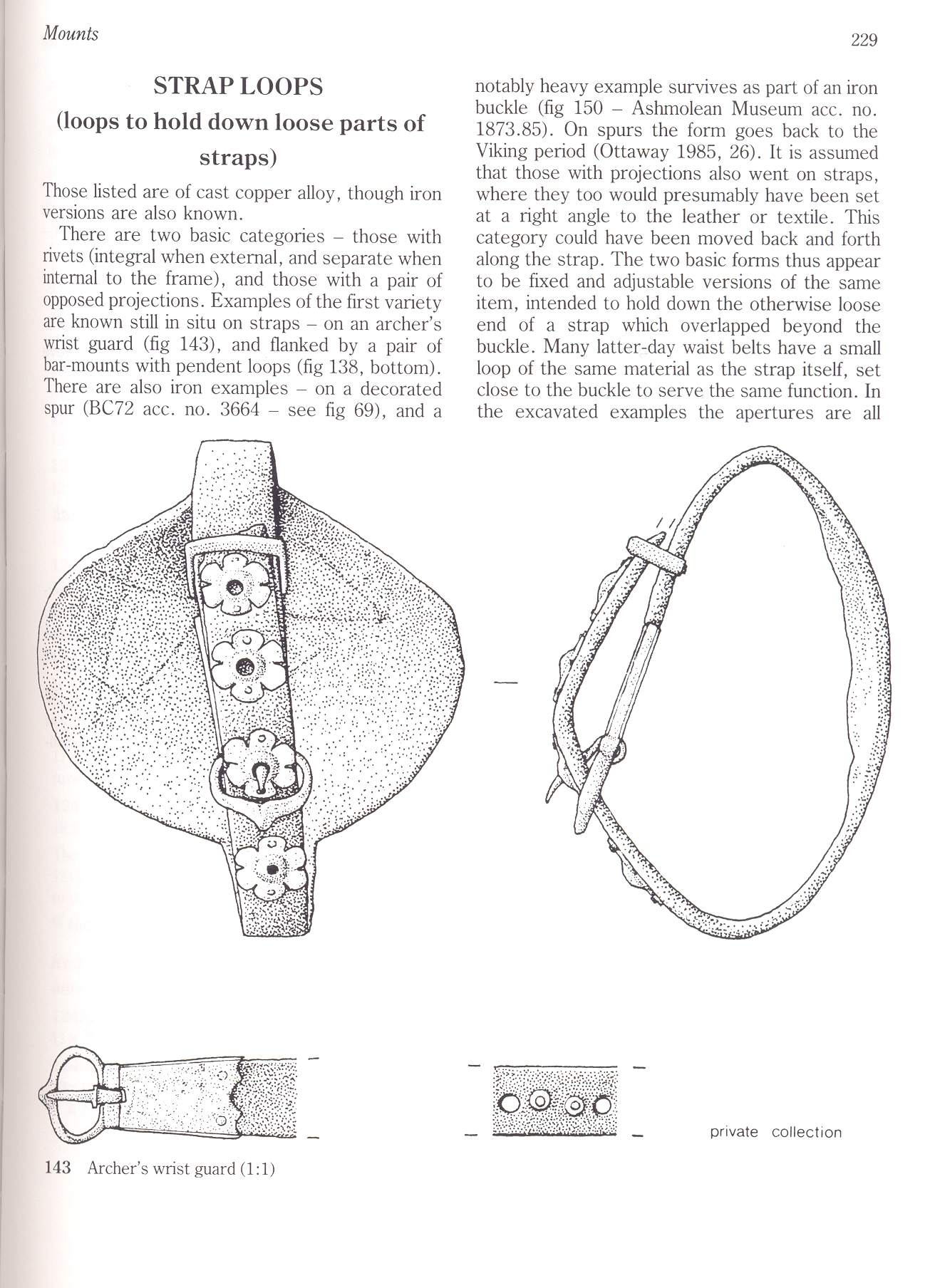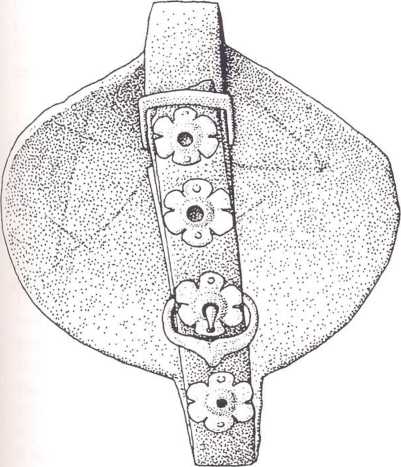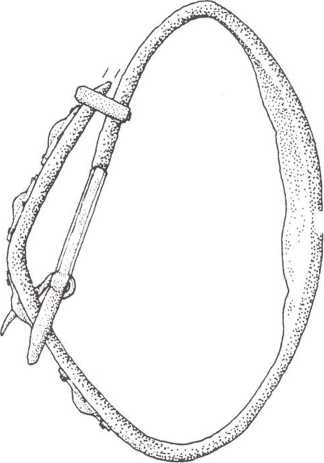258 (44)

229
Mounts
STRAP LOOPS
(loops to hołd down loose parts of straps)
Those listed are of cast copper alloy, though iron versions are also known.
There are two basie categories - those with rivets (integral when extemal, and separate when intemal to the frame), and those with a pair of opposed projections. Examples of the first variety are known still in situ on straps - on an archer’s wrist guard (fig 143), and flanked by a pair of bar-mounts with pendent loops (fig 138, bottom). There are also iron examples - on a decorated spur (BC72 acc. no. 3664 - see fig 69), and a notably heavy example survives as part of an iron buckie (fig 150 - Ashmolean Museum acc. no. 1873.85). On spurs the form goes back to the Viking period (Ottaway 1985, 26). It is assumed that those with projections also went on straps, where they too would presumably have been set at a right angle to the leather or textile. This category could have been moved back and forth along the strap. The two basie forms thus appear to be fixed and adjustable versions of the same item, intended to hołd down the otherwise loose end of a strap which overlapped beyond the buckie. Many latter-day waist belts have a smali loop of the same materiał as the strap itself, set close to the buckie to serve the same function. In the excavated examples the apertures are all



143 Archer’s wrist guard (1:1)
Wyszukiwarka
Podobne podstrony:
Relief Patterns Simple Marguerite Stitch loops to the back (right side) of tabric. 1st row (right si
Convert6 Convert to Printed Circuit Board 3 Areas of solid copper can be added automatically to the
Image118 FIGURĘ TWO IS A FULL SIZE TOP VIEW OF COLO FUSION MOTOR GENERATOR 9) Aluminum circular tank
SNV36266 Chwalić męża prawego, co godzien pochwały, jest to hołd winny dawać przymiotom i cnocie. Ni
PAWLUCZUK ŻYWIOŁ I FORMA (44) świadomości formy. Lud uprawiając to, co my nazywamy sztuką, nie był ś
page0254 2W. - -4X4-0* , $440 $y$$? <U% -cńirJiy, 44^ /i£$ye$, $$$? *<?y ifi
page0259 258 (£$. 5. SC^cobt. 7. ^(ałnt djtoałp, to ftórpm :c. djmatić ^)3aua: SBp
m144 lock. The serpentine lock at last enablcd the shooter to hołd thc gun with both hands and conc
I want 2 hold I WANT TO HOŁD YOUR HAND http://www.smf.prv.pl J. LENNON - P. McCARTNEY Gm7
Pocket to hołd larger chargers, plugs, USB ports and morę... shortth& Use the cord as a hanger s
2951?beH0 jpeg i want to hołd hands and waste friday nights with you
unit22 to focus on sth to hołd talks with sb leadership a two-day visit to pay a visit to
więcej podobnych podstron